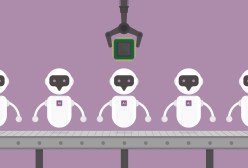Open data advocate: States, cities can link IoT procurement to data management

State and local governments need to develop fast-moving purchasing practices to fully embrace the Internet of Things, and tackle the daunting task of managing the data “smart” devices produce, according Waldo Jaquith, a software developer and open data advocate.
As the director of the nonprofit U.S. Open Data and a soon-to-be member of the General Services Administration’s 18F development team, Jaquith sees the procurement of IoT tech and the way governments manage the data generated by those connected devices as two intertwined problems for the public sector to confront.
Given the complexity of those twin issues, he doesn’t think IT leaders can afford to wait to start working on them.
“It doesn’t matter whether you think IoT is overhyped or not, your CIO or CTO or governor or whoever will want to get in on the trend,” Jaquith said at the National Association of State Technology Directors’ annual conference in Washington, D.C.
He notes that there’s huge potential for states and localities to use the IoT, and he’s excited about how governments could use connected tech for everything from studying traffic patterns to tracking soil moisture in drought-plagued areas.
Yet Jaquith feels that the adoption of this technology has still been sluggish — he points out that governments spent about $8.8 billion on IoT devices in the last fiscal year, but the vast majority of that stemmed from military agencies.
No matter the agency doing the spending, however, he feels that governments have become overly reliant on the private sector to lead their adoption of the IoT.
“Often the process is vendor led, since they stand to benefit, and that’s entirely rational,” Jaquith said. “But it’s an inversion in the pattern we normally see in government tech. It’s not like open data or something else where the push to adopt it is coming from citizens or nonprofits or activists.”
Indeed, he notes that data governance can seem particularly daunting for state and local IT shops as they ponder how to handle the “firehose” of data produced by connected tech, opening the door for companies to offer up their services.
“Where’s it going to go, how are you going to store it or index it, do you have to keep it forever?” Jaquith said. “If this sounds alarming to you, that’s what some vendors are counting on.”
But he cautions that there is no “canonical IoT platform” to provide governments a unified way of managing an array of connected devices and the data they generate, since there are still so few standards governing how the technology operates.
“If you license a comprehensive platform, you’re going to blow millions of dollars on a Healthcare.gov-style dumpster fire,” Jaquith said.
Instead, he thinks a “modular contracting model” similar to what 18F is working on at the federal level is a better way for states and localities to proceed moving forward. He suggests mandating an agile development process for a series of interconnected, yet “self-contained” projects
“If one vendor produces, that’s useful on its own, so you need a structure where one can work and another fails,” Jaquith said. “Do weekly sprints for two months. Every week, you have a usable product that gets better.”
As the procurement process progresses, Jaquith also recommended that governments “insist on open file formats and schemas” as their private sector partners work on these systems.
“You don’t want to have to use in exactly the format they provided it with their own special app,” Jaquith said.
That will make it easier for governments to share both data with each other down the line, and eventually open up this data to the public.
“You can’t release all of it, especially right away,” Jaquith said. “But, eventually, you’re going to look really good as other people do really interesting stuff with it.”





